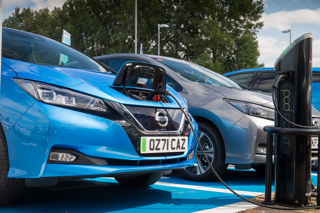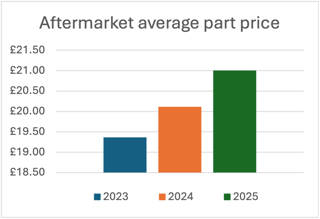Matt Freeman, managing consultant at Cap HPI Consulting explores the rise in plug-in hybrid electric behicles (PHEV) registrations.
A quick look at SMMT registrations shows that the popularity of PHEVs is soaring this year, with an increase of 34% year to date.
The trend is coupled with a slowdown in the number of BEVs registered at 10.6% and an increase in petrol by 9.4%.
It may have seemed last year that the rise of the BEV was inexorable and the PHEV would be left behind. How do we explain this change in fortunes? It's clear that OEMs are increasing the volumes of hybrid vehicles as battery packs become more available and accessing latent demand. The PHEV may also be a safer bet in hitting the ZEV mandate this year.
There can be little doubt that the media onslaught against BEVs and a tsunami of misinformation on social media will impact demand for BEVs. It's an issue that needs to be urgently addressed if the transition to net zero is to continue to schedule.
The UK government's decision to delay the ban on new petrol and diesel car sales from 2030 to 2035 may also have made motorists more inclined to opt for PHEVs as a transitional solution.
The technology available in PHEVs has advanced rapidly, and many now offer DC and fast charging, which allows many to be run as BEVs for the average daily commute. Modern PHEVs offer longer electric-only driving ranges, improved fuel efficiency, and better performance compared to earlier models. This makes them a more viable option for everyday use, appealing to a wider range of motorists.
Bridging Option
Many motorists are concerned about the environment, and a PHEV is a helpful bridge to a BEV. It may help them get used to charging infrastructure and understanding the different driving dynamics of an EV. PHEVs offer the advantage of lower emissions compared to conventional vehicles, especially when driving in electric mode.
Government incentives play an important role in the adoption of low-emission vehicles. PHEV drivers currently enjoy reduced vehicle taxes, lower Benefits in Kind, and exemptions from congestion charges in some cities, all of which help to make PHEVs more financially attractive to consumers.
The availability of charging infrastructure has been steadily increasing across the UK, making it more convenient for motorists to charge their PHEVs. This alleviates one of the main concerns associated with electric vehicles - range anxiety - and makes PHEVs a more practical choice for many consumers.
Motorists can only buy the vehicles that are available, and OEMs have launched a wide range of PHEVs in the last 12 months. The increase in availability is supported by price cuts and deals to push PHEVs to make them more appealing.
Indeed, the average price of a new petrol PHEV has fallen from a high of £71,453 on 1 May 2023 to £63,843 by the start of April 2024. The decline in the cost of a new PHEV sits in contrast to a rise in diesel vehicle prices of £50.714 to £56,254 over the same period.
Matt Freeman is managing consultant at Cap HPI Consulting



















Login to comment
Comments
No comments have been made yet.